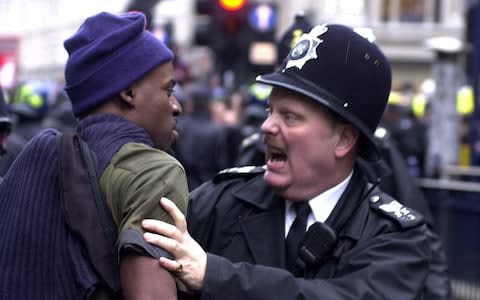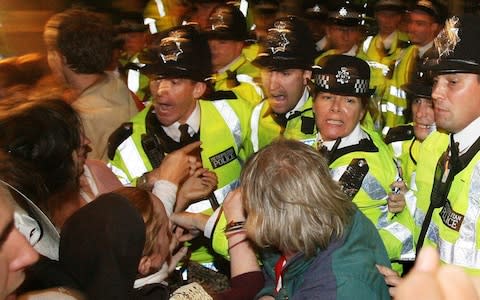Police officers asked to fill in forms if they shout at suspects while restraining them

Police officers who shout at violent suspects while restraining them have to spend valuable time filling in forms to justify their actions, it has emerged.
New figures released by the Home Office detail for the first time every incident where a frontline officer employs a "use of force" during their duties.
The data, which is being collected in some force areas for the first time, means officers have to faithfully record what actions they take when dealing with the public.
The statistics revealed that last year there were 313,000 recorded incidents of police force across England and Wales.
This details every occasion when an officer uses a so-called "force tactic", which includes everything from putting a non-compliant suspect in handcuffs to using a firearm.

But in addition, officers are also required to record incidents of "tactical communication", when they shout at an assailant in order to get them to comply with an instruction.
While shouting itself is not technically considered to be a use of force, it must be recorded when it is used in conjunction with another tactic.
Despite welcoming the the transparency that the data offers, frontline officers have expressed concern that they could end up spending more time filling in forms than actually fighting crime.
There have also been complaints that the time it takes to record the information can vary widely from force to force.
Simon Kempton, Operational Policing lead for the Police Federation of England and Wales, said: "There is no problem in principle in officers recording this information but we have to ensure that when it is done it takes the least possible time.
"At the moment in some force areas it might take five minutes, while in others it can take 20. If you have dealt with three people in one incident that is 20 minutes per subject, so it is an hour out of your day.
"The accountability of agents of the state is very important but it is vital we get the balance right and we do not allow form filling to take over from crime fighting."

The figures showed that out of the 313,000 instances where force was used more than half involved the officers shouting at the suspect.
More than 200,000 of the cases involved putting a suspect in handcuffs and there were also 110,000 incidents where officers physically restrained a person without the use of a weapon, a tactic known as "unarmed skills".
Pepper spray was used on 14,000 occasions and police dogs were actively deployed in 1,900 cases.
Between 2017 and 2018 police in England and Wales only discharged a firearm on 12 occasions, although there were 3,100 instances where firearms were used as part of an operation.
More than a third of cases in which use of force was used involved people who were drunk.
The data also revealed information about those on the receiving end of the force.

Black people were over represented featuring in 12 percent of incidents despite only making up 3.3 per cent of the population.
A spokesman for the National Police Chiefs' Council, said: “Officers have always had to record all uses of force in their evidential notes and statements, to explain why it was used, and how it was lawful, proportionate and necessary in the circumstances.
"This release of this new national data shines a light on how police use force, and offers unprecedented transparency to the public.
“We will be working to continuously improve the quality and consistency of this data to maximise its use. We want to see these statistics informing future planning and learning on training and equipment, in order to provide the best possible service and protection to the public.”

 Yahoo News
Yahoo News 